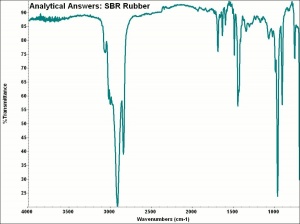Difference between revisions of "Styrene-butadiene rubber"
Jump to navigation
Jump to search
(username removed) |
m (Text replace - "== Authority ==" to "== Sources Checked for Data in Record ==") |
||
| Line 9: | Line 9: | ||
butadiene styrene; Buna-S; SBR | butadiene styrene; Buna-S; SBR | ||
| − | == | + | == Sources Checked for Data in Record == |
* G.S.Brady, ''Materials Handbook'', McGraw-Hill Book Co., New York, 1971 Comment: p. 629 | * G.S.Brady, ''Materials Handbook'', McGraw-Hill Book Co., New York, 1971 Comment: p. 629 | ||
Revision as of 17:52, 1 May 2016
Description
An elastomer made by copolymerizing butadiene with styrene. Styrene-butadiene rubber is commonly called Buna-S and SBR. Large amounts of the copolymer were first commercially produced in the 1930s as a synthetic replacement for natural rubber. Currently, styrene-butadiene is the most widely used synthetic rubber. SBR has good water and heat resistance but poor oil, solvent, and oxidation resistance. It also has a tendency to crawl. SBR is used for tires, footwear, adhesives, coatings, and carpet backing.
Synonyms and Related Terms
butadiene styrene; Buna-S; SBR
Sources Checked for Data in Record
- G.S.Brady, Materials Handbook, McGraw-Hill Book Co., New York, 1971 Comment: p. 629
- Richard S. Lewis, Hawley's Condensed Chemical Dictionary, Van Nostrand Reinhold, New York, 10th ed., 1993
- Pam Hatchfield, Pollutants in the Museum Environment, Archetype Press, London, 2002
- M.Kaufman, The First Century of Plastics, The Plastics and Rubber Institute, London, 1963
- Art and Architecture Thesaurus Online, http://www.getty.edu/research/tools/vocabulary/aat/, J. Paul Getty Trust, Los Angeles, 2000
